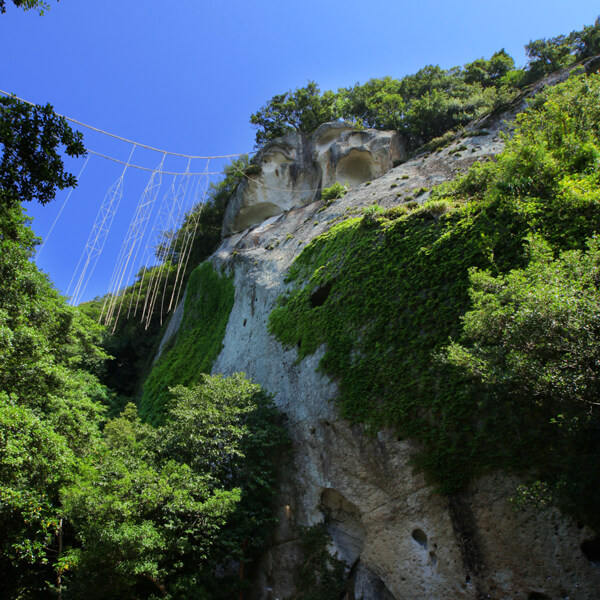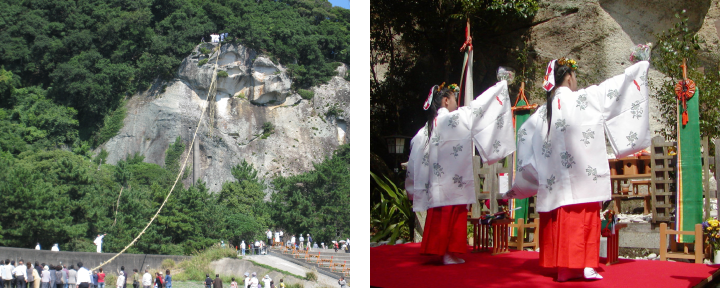Not only did Izanami-no-Mikoto create the land of Japan together with her husband, Izanagi-no-Mikoto, but she is also known as the mother of the gods, having given birth to 8,000,000 gods, including Amaterasu O-mikami (Japan's Sun Goddess) and Susanoo-no-Mikoto. Izanami-no-Mikoto died after sustaining severe burns while giving birth to Kagutsuchi-no-Mikoto, the Fire God. Izanagi-no-Mikoto was overcome with grief at the death of his beloved wife and buried her remains in Arima Village in Kumano (present-day Arima town in Kumano City). The World Heritage-designated site Hana-no-Iwaya is the mausoleum of Izanami-no-Mikoto.
Compiled 1,400 years ago, the Nihon Shoki states that the residents of Arima Village would offer prayers for the soul of Izanami-no-Mikoto by offering seasonal flowers and singing and dancing. This tradition continues today through the O-Tsunakake-Shinji Festival, which is held at the World Heritage-designated site Hana-no-Iwaya Shrine on the 2nd of February and October of every year.
The O-Tsunakake-Shinji Festival is a Shinto ritual in which an about 170 m rope—the longest in Japan—is pulled from the top of the enormous 45-meter-high boulder that is the shrine's object of worship to Shichirimihama, then around the shrine grounds, to pray for a bountiful harvest.
The rope is hung with minagare-no-hatagata (three braided flags symbolizing the gods Tsukuyomi, Amaterasu, and Susanoo), a variety of seasonal flowers, fans, and other adornments tied together.












